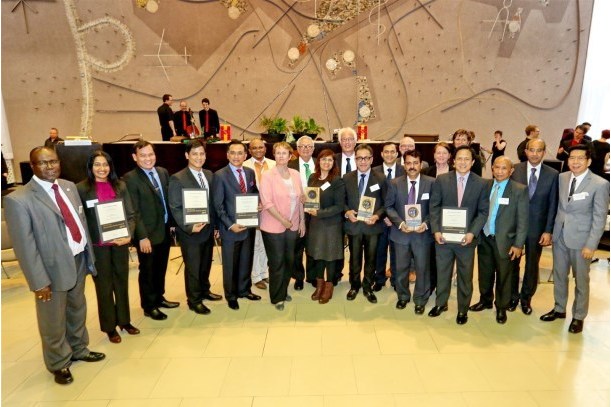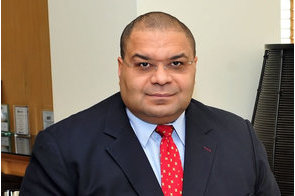Making sustainable finance sustainable

Summary
Banks should concern themselves with what is equitable to society and the environment while trying to make profit.
On receiving the invitation from European Organisation for Sustainable Development to speak at the Global Sustainable Finance Conference 2015, which held last month in Karlsruhe, Germany, I deliberately chose the title of this article as the subject of my address. Of course, my intention was not to be a fly in the ointment. I was aware that the influential forum is where senior practitioners gather to share project experiences and be recognised for their sustainable finance initiatives and impacts. Nevertheless, I saw such an occasion as a good opportunity to provide some needed reality checks for practitioners.
It is commonly agreed that sustainable finance refers to the practice of embedding social and environmental considerations into project finance, beyond traditional sole consideration for financial returns. Accordingly, the new financing concept emphasizes the 3 “Ps” of “People,” “Planet” and “Profit.” The problem with this definition, however, is the supposition that sustainable finance is by itself – or because of its name – sustainable. I would rather a definitional construct that relates to its connotative meaning: the practice of finance in a way that ensures the future of financing is preserved. Social and environmental responsibility, therefore, comes across the more as the framework for preserving the future of financing.
Why do I think that sustainable finance will not be a self-fulfilling dream? I will first eliminate the reason that doesn't apply. I do not believe that bringing the principle of responsibility to society and the environment into project finance would erode profitability of financial institutions. Although we have to be more accommodative in our appreciation of what constitutes return on investment, sustainable finance can deliver financial returns. It does.
Sustainable development – the object of sustainable finance – actually provides more opportunities and more scope for financial product innovation and profit. Indeed, growing funding opportunities are seen in green projects. And inclusive finance, covering financial access for Micro, Small and Medium-scale Enterprises (MSMEs), start-ups, women entrepreneurs, etc., now constitutes the largest asset class for impact investments.
But some people think otherwise. As a result, only 80 financial institutions of the world – including only two mid-tier Nigerian banks, Access Bank and Fidelity Bank – have adopted the Equator Principles, which came into effect in 2003 as a voluntary framework for determining, assessing and managing social and environmental risks in projects. Since the Global Alliance for Banking on Values (GABV) started in 2009, its institutional membership has only managed to grow to 25, with the balance sheet of member institutions reaching $70 billion in 2013, according to Guardian UK.
Most banks believe that sustainable banking practices are a drag on the financial bottomline. But on the contrary, the FTSE4Good Index has been known to outperform FTSE All-World Index, according to International Institute for Sustainable Development (IISD). In the same vein, data compiled by Ecovalue 21, a rating model that measures the environmental performance of companies, has shown that portfolio managers who screen out companies with poor environmental records outperform others who don't, by more than 7% annually.
While efforts to determine the relative performances of Socially Responsible Investor (SRI) funds against conventional financing vehicles remain inconclusive, knee-jerk assertion of inferior returns on investment by SRIs is becoming baseless, if not counter-factual.
Having said that, let me now proceed to mentioning the two major threats I see to sustainable finance. The first is general financial instability risk. Conventional project finance is always under threat. This poses the risk of collateral damage to sustainable finance. The reason is that the value of total assets invested in sustainable finance, although growing, still represents just a very tiny percentage of total assets invested in global finance. Indeed, assets invested in sustainable finance is a slim slice off aggregate financial assets.
Since 2009 – when the Central Bank of Nigeria's stress test revealed a systemic threat to the banking system – even the sound bites of sustainable banking have lessened in Nigeria. The banks have had to focus on existential threats and the creation of “shareholders value” again. Similarly, since the Global Financial Crisis, there has been a detraction in asset allocation to sustainable finance. Income from trading activities, as opposed to intermediation, has regained influence on profit.
The irony is that, although sustainable finance is a response to the unsustainable practices of conventional finance, the reality today is that the future of sustainable finance depends on the health of the larger financial system.
The second threat is the credibility overhang. The credibility problem of conventional banking and finance can rub off on both the practice and perception of sustainable finance. What is society to make of the rigging of LIBOR and the rigging of exchange rates by the big US and European banks? While society needs banking and finance, it is doubtful if we agree that bankers and financiers are good role models in society. Absent regulatory support, trust amongst bankers will quickly evaporate.
However, the jury is out on the credibility of sustainable finance. No sooner did we start hearing of greening financing and embedding social responsibility in project finance than we also started hearing about “green-washing” and “social-washing.” These two terms simply mean that there is a PR façade to claims of responsibility to society and the environment by practitioners of sustainable finance. Even more problematic is that some of the Libor riggers are adopters of the Equator Principles.
There are three other areas where sustainable finance is struggling with credibility which I would like to point out. The first is double-standard. The same institutions which advocate and show off their sustainable finance credentials are also involved in the practice of conventional finance. The contradiction is even amplified in the relative smallness of the total asset allocated to financing socially and environmentally 'certified' projects, compared to other projects.
The second is the slowing growth in adoption of sustainable finance. The soft-pedalling in the commitment to sustainable finance by its avowed supporters is noticeable. We are not seeing enough asset allocation to green or social projects, in spite of the prevalence of the risks of social dislocation and inhibition to economic growth because of the neglect.
The third area is diversion of funding. Development Finance Institutions have to work through intermediaries a lot of the time. But the intermediary institutions divert the funding into conventional finance for the purpose of making higher profit and because of lack of experience in disbursing to impact investments. In terms of the usefulness of experience, it is unsurprising that Diamond Bank Plc is leading the charge in innovative funding of SMEs, as a result of its long-term commitment to the sector and longstanding relationship with some global DFIs.
In spite of these challenges, practitioners should remain resolutely committed to the triple bottom-line of social, environmental and financial returns on investments. Banks should concern themselves with what is equitable to society and the environment while trying to make profit. Sustainable finance principles will bring equity to financing, but not by describing old practices with new terminologies.
Related
-
AfDB’s new 5-year strategy for Nigeria to tackle Covid-19 economic shocks
The 2020-2024 CSP has two key priority areas for Nigeria, namely infrastructure development and social inclusion through ...
-
Samsung enjoins corporate investors to lead Africa's sustainable development agenda
Samsung said it is making positive contributions towards the SDGs.
-
AFC launches think-tank to promote project development across Africa
The AFC said African Project Developers Initiative is a platform for fostering continuous dialogue amongst members.







